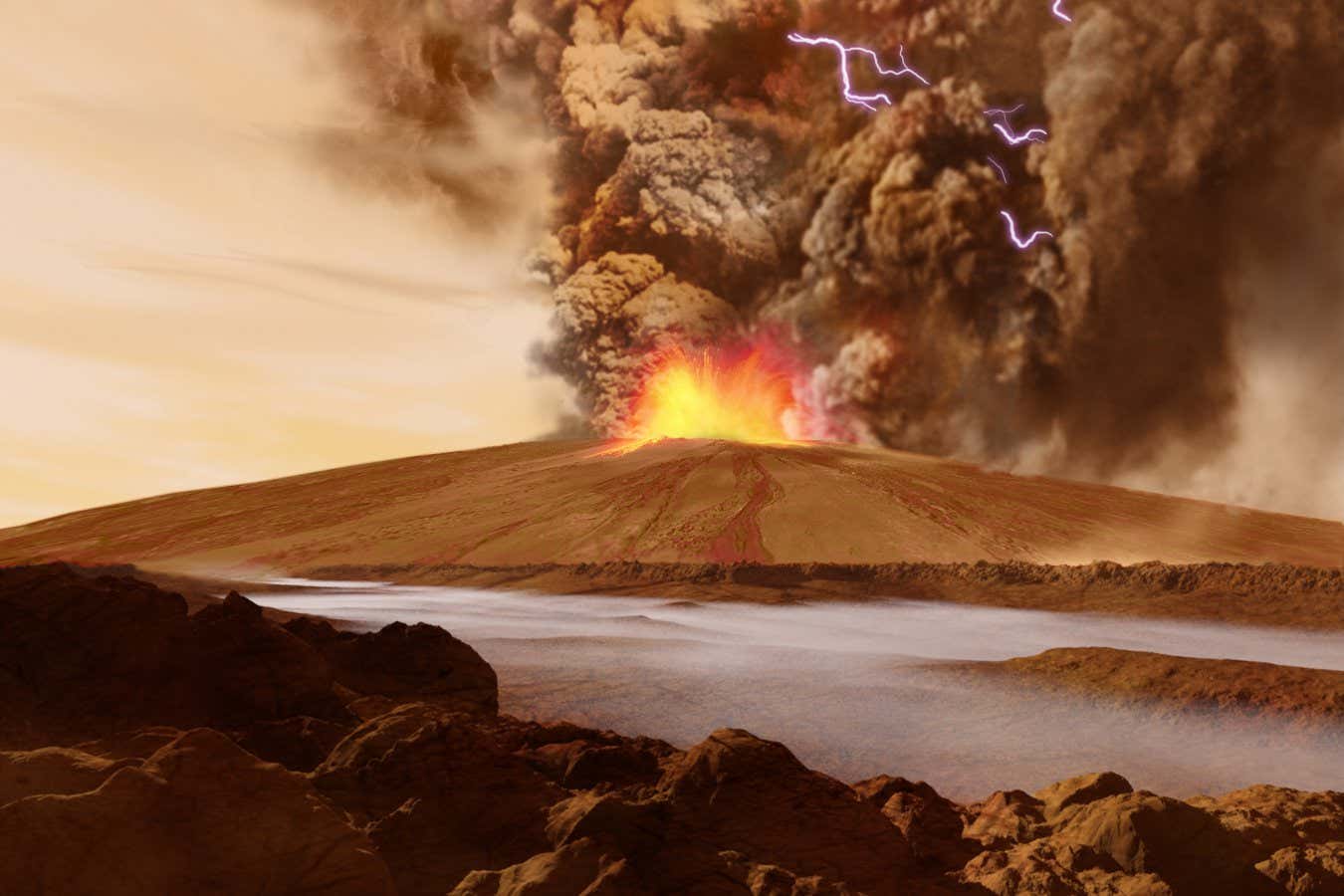Key Takeaways
- Recent findings suggest ancient volcanic eruptions on Mars may have contributed to subsurface ice at the equator.
- This ice could be crucial for future human missions, providing a potential water source.
- The equatorial regions are ideal for landing missions due to their thicker atmosphere, aiding lander descent.
Exploring Mars’ Ice Formation
The discovery of thick layers of ice beneath the surface of Mars’ equator has puzzled scientists, especially given the area’s warm temperatures. Recent research indicates that these ice deposits may have originated from volcanic activity billions of years ago. According to Saira Hamid from Arizona State University, this phenomenon is surprising, as the equator typically reaches around 20°C (68°F) at midday.
In their investigation, Hamid and colleagues conducted simulations of ancient volcanic eruptions. They theorized that explosive activity could have projected water vapor from Mars’s interior into its previously denser atmosphere. Over time, this vapor would have frozen and fallen back to the planet’s surface, accumulating into the ice layers observed today. Hamid describes this process as a captivating “story of fire and ice.”
Unlike Earth, Mars’s lower gravity allowed volcanic materials to reach astonishing heights during eruptions, potentially soaring up to 65 kilometers above the surface or even into space. Once the material settled back to the ground, it formed a layer of ice intertwined with volcanic ash. This insulating ash layer helped preserve the ice over millions of years by preventing it from sublimating into space.
Tom Watters of the Smithsonian Institution notes the intriguing nature of these ice-rich regions. In particular, the Medusa Fossae Formation, one of the largest volcanic sites near the equator, may contain enough water to fill the Great Lakes, demonstrating the vast quantities of ice present.
Previously, researchers theorized that changes in Mars’s axial tilt could have shifted equatorial regions to the poles. However, Hamid argues that the volcanic eruption hypothesis simplifies the explanation by eliminating the need for such drastic planetary changes to account for the observed ice.
Additionally, the equatorial region of Mars is advantageous for landing missions due to its thicker atmosphere, which aids in slowing down entry vehicles. The presence of water in this region could serve as a critical resource for potential future human missions to the planet. Although initial exploratory missions would prioritize bringing enough water to ensure survival, later missions could benefit significantly from the in-situ water sources available from the ice.
Watters emphasizes the need for caution in planning missions to Mars. “Bring a shovel, but bring enough water, too,” he advises, underscoring the unpredictability of the Martian environment and the importance of adequate preparations for any unforeseen circumstances.
This research not only enhances our understanding of Mars’s geological history but also raises vital considerations for human exploration, revealing how ancient volcanic activity may have shaped the planet’s current landscape and resources.
The content above is a summary. For more details, see the source article.















